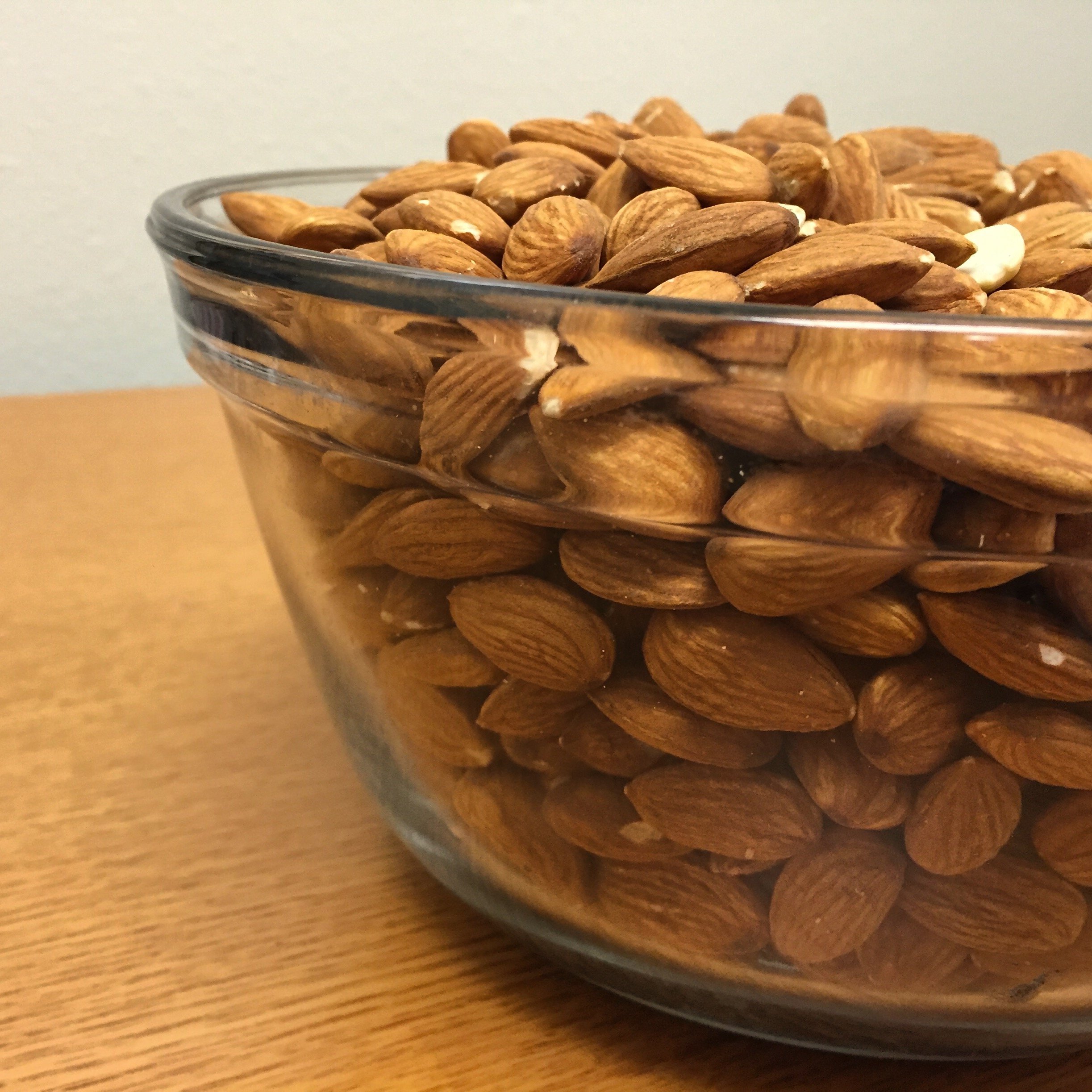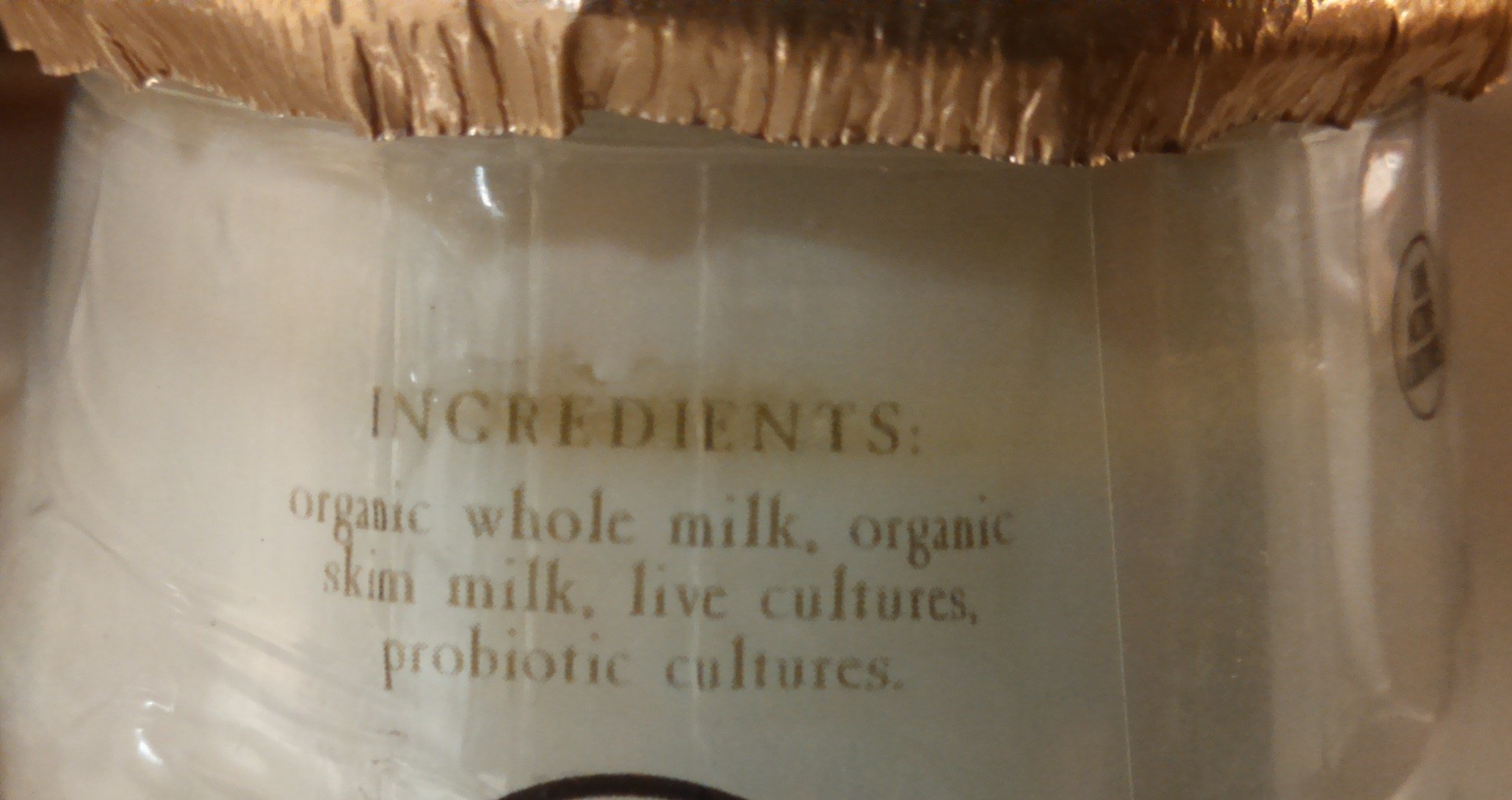Eat Real Food
I was recently asked to edit a brochure with the title “Eat Real Food”. Before I new it I had turned a one page short outline of text into a two page article barely recognizable to the original piece of work. I had not realized how strongly I felt about defining, or trying to define, what real food is.
What would you say if someone asked you what food is? How about “real” food? This is a complex question with no real answer (pun intended). So, I thought, why not share my humble opinion on the topic with my wonderful online audience? I will be curious to hear if you agree…
To me, eating real food means eating food of high nutritional quality that is minimally processed.
This means consuming foods from each food group that are naturally high in vitamins, minerals, and fiber without unnecessary added sugar, salt, fat, or other additives. (Unnecessary in this case would mean it does not add to the nutritional quality of the food.)
Minimally processed varies some depending on the food, but basically cooking, grinding, drying and (usually) canning are all minimal processes on foods. These do not drastically change the original version of the food and keep most of the nutrition intact. If there is a label present on minimally processed food, the main ingredient should be that food, or foods if it is a mixed dish.
I also want to point out that real foods contain nutrients, they are not themselves a nutrient. For example, carbohydrates are not a food, they are a nutrient that is found in food. Therefore you cannot say that carbohydrates are or are not “real food” by my above definition.
Interesting, also, you could easily, per my definitions, swap out "real" for whole. Whole foods are real foods and real foods are whole foods.
Further defining what foods are “real”
Thinking back to elementary health class, do you remember what the main food groups are….?
Vegetables, fruits, grains, dairy, and the all-inclusive meat, fish, poultry, eggs, beans, nuts and seeds group, which is now shortened to be called the “protein” group. As mentioned above, however, protein is not a food, but a nutrient.
Collectively, protein, carbohydrates and also fats are called macronutrients, because they are large (macro) and provide calories in our food.
AND I REPEAT: Macronutrients are not foods.
Do note, I am not counting added fats and sugars as a food group; which could be found on the tippy top of the original food pyramid, but is no where to be found in the new MyPlate version of the government’s depiction of how to eat.
[gallery ids="1582,1583" type="rectangular"]
Neither of these are perfect guides of how to eat, and they do not address eating real food, per-say, but the confusion between a nutrient and a food really starts to get muddled when the current MyPlate includes protein in among the food groups. In my opinion this is trying to simplify nutrition in a way that only makes it worse.
ANYWAY, where was I …
We must have macronutrients to live, but we must also have vitamins and minerals to run bodily functions and help us fight sickness and disease. Vitamins and minerals are non-caloric nutrients, and collectively we call these micronutrients. There are thirty two vitamins and minerals spread out among the food groups and we need all of them for best health.
This is where real food comes into play. Food in its original form means it is already well equipped with the nutrition we need. Eat a variety of these foods from each food group and you will cover your bases from macro to micronutrients, without fear of too much or too little of any!
REAL FOOD PER FOOD GROUP
Fruits & Vegetables contain carbohydrates, fiber, vitamins C, A & K, and a plethora of minerals such as iron, calcium, magnesium, and potassium. (This is not a comprehensive list, just giving you an idea.)
If we are going by my definition above- real foods are of high in nutritional quality and minimally processed- then fruits and veggies definitely, always, meet this first criteria. You want to eat a variety of all fruits and veggies in different colors across the spectrum of seasons. This is how you know you will get all the nutrients they each provide, as each contains a slightly different nutritional profile.
As far as minimally processed goes: cook them, dry them, freeze them, even can them and they are still going to give you the good stuff. When they are ground and powdered, added to flour and fried to make chips, or made into jelly, or juiced to make fruit snacks, or injected into chocolate, for example, they are no longer minimally processed and the nutritional value plummets. Just because a cracker has beet powder added to it does not make it a vegetable; it is a highly processed food product. Also, just to be clear, ketchup is highly processed and not a vegetable.
What other examples can you think of where fruits and veggies are overly processed, have therefore lost their nutritional value, and can long be considered as eating real food?[gallery ids="1594,1591" type="rectangular"]
Grains contain carbohydrates, protein, fiber in WHOLE grains. Most grains are fortified with B vitamins, plus they have minerals including selenium, magnesium, and iron. (This is not a comprehensive list, just giving you an idea.)
Nutritional quality and minimally processed are for the most part mutually exclusive, and grains are no exception. Highly processed, or refined, carbohydrates have a high degree of their nutrients stripped from them when they are dried and ground into flour.
For best nutritional value, look for the word whole before any ground flour product on a label, and that whole grain should be the first ingredient on the list. Other naturally whole grains (not as flour) include quinoa, wild rice, brown rice, farro, kamut, wheat berries, steel cut or rolled oats. The best choice is to eat these when they are the ONLY ingredient.
Am I saying that sour dough bread is not real food because it is not made from whole grain flour? Well, no, but I am saying it is not as full of nutrients as eating, say, wheat berries.Refined carbohydrates include most forms of sugar, and sugar is definitely processed (maple syrup and honey not included they are minimally processed since they are what they are upon harvest, no additions or subtractions needed). This can be a long list! Many products want to trick you into thinking they are a healthy food because they have a whole grain, when there is just as much sugar, and or fat/oil, as there is whole grain. If this is the case, it is a sign that product is more than minimally processed.The added sugar and fat also takes away from the nutritional quality of the whole grain food. Many granola- style bars, chips, crackers, bread products, granolas and cereals fall into this category, although not all are created equal. If you choose to eat these products use your best judgement as to the balance of whole to refined grain and other additives they provide.
Many condiments, sauces and dressings will contain high amounts of added sugar also. Check your food labels to see if there is added sugar, as there are many that may surprise you!
[gallery ids="1586,1587" type="rectangular"]
We are going to break up the “Meat & Bean” or “protein” group into plant based and animal based groups for easy of explaining them in terms of real food.
Beans, legumes, nuts & seeds contain a combination of all three macronutrients; protein, fat, and carbohydrates, plus they are a good source of fiber, omega-3 oils, vitamin E, selenium, chromium and copper. (By no mean is this a comprehensive list, just giving you an idea.)
Like fruits and veggies, these foods are naturally of high nutritional value and it is hard to ruin that with cooking, grinding or roasting these foods. The heavy processing, then, will come when these are mixed with syrup and dipped in chocolate, or mashed with oats and oil and dried into a bar, or ground as flour and made into a completed different food and the original is only mentioned in the product name.
To this end, it is important to note that just because an oil, such as canola, is seed based, it is not a whole food. You get the oil because the seed is processed; the oil is a new food product that no longer represents the seed it came from. As an extracted oil, it is not a real, or whole food, but a fat source added to foods for flavor and texture. This goes for any plant based oil or solid fat source.

Meat, fish, poultry & eggs contain protein, fat, all the B vitamins, vitamins A & E, heme iron, choline and zinc. (This is not a comprehensive list, just giving you an idea.)
These animal products (besides fish) get a bad rap due to our tendency to over consume them. In moderation, these foods can supply us with necessary nutrition.
Best nutritional quality will come from avoiding processed, or cured, meats like salami, pepperoni, hot dogs and pre-packed deli meats. Processed red meats are often high in sodium as a preservative, as well as other additives for preservation, taste and texture, including sugar and fat.
Like fruits and veggies, if yo do choose to eat animal products you want to eat a variety from this group to ensure nutritional quality. For instance fish has a different fat profile (more anti-inflammatory) than other animal products and positively contributes to an overall balance of nutritional value in this group.
Any meat or egg substitutes will have to evaluated based on the main ingredient(s) they are formed from.
[gallery ids="1592,1590" type="rectangular"]
Dairy gets its own category because it is an animal product, but it contains not only protein and fat, but also carbohydrate in the form of milk sugar, or lactose. It is also a natural source of calcium, phosphorus, vitamins A & B12, plus usually fortified with vitamin D. (This is not a comprehensive list, just giving you an idea.)
Besides its natural lactose sugars, dairy tends to have sugar added to it during processing. Especially yogurt, to balance its naturally sour profile from fermentation, or no or low fat dairy products which have fat removed and therefore need to add back flavor (because fat tastes good!). I would go as far as to say non fat products are too highly processed due to the multiple steps the original milk must through to have the fat removed.
As far as nutritional quality goes, as long as the first and main ingredients is from milk, then it is safe to assume you will receive the nutrients from that milk in the food (except the fat of course if it has been removed). Powdered, evaporated, or less than 100% dairy is not guaranteed to follow this logic.
Any milk substitute will have to be evaluated based on the main ingredient(s) they are made from.

This was a long one, but you made it!
Please leave me any comments or questions that many have bubbled up for you.
More information
- Academy of Nutrition and Dietetics, Eatright.org
- MyPlate and MyPyramid
- Harvard Nutrition Source
- Fruits and Veggies More Matters

